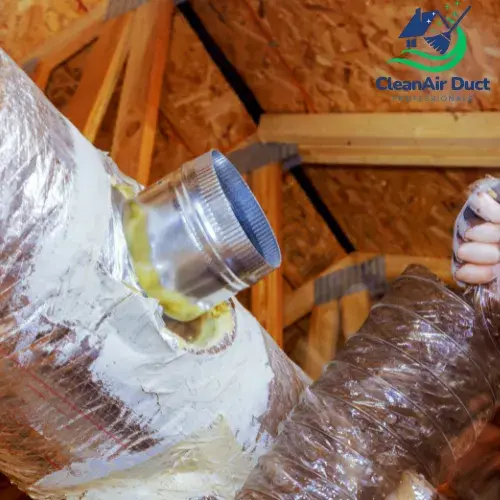
Over time, air ducts can develop leaks and cracks due to wear and tear or improper installation. These gaps allow conditioned air to escape, reducing the efficiency of your HVAC system and driving up energy costs. When your ducts are damaged, your system has to work harder to maintain the desired temperature, which not only wastes energy but also increases the strain on your equipment.
Leaks can also let in unconditioned air from areas like the attic or crawl space, bringing dust, debris, and allergens into your living spaces. This compromises indoor air quality and can worsen allergies or respiratory problems.
While minor leaks can sometimes be sealed, extensive damage often calls for air duct replacement to ensure long-term efficiency. Replacing damaged ducts eliminates air loss, restores proper airflow, and helps your HVAC system run more effectively, saving you money and improving your home’s comfort.
Poor Insulation and Aging Materials: How They Affect Your Ductwork
As air ducts age, the materials they’re made of can begin to degrade, leading to poor insulation and reduced performance. Older ducts may lack the modern insulation standards needed to prevent energy loss, causing your HVAC system to work harder to heat or cool your home. This results in higher energy bills and uneven temperatures throughout your living spaces.
In some cases, ducts made from outdated materials like fiberglass or thin metals can become brittle or corroded over time. This not only reduces their efficiency but also increases the risk of cracks, leaks, or complete failure.
Replacing old or poorly insulated ducts with newer, energy-efficient options helps maintain consistent airflow and reduces energy waste. Upgraded ductwork ensures better temperature control, improved system performance, and lower utility costs, making it a valuable investment for both comfort and efficiency.
Mold and Contaminant Build-Up: A Health Risk That Demands Air Duct Replacement
Mold growth and contaminant build-up in your air ducts are serious issues that can pose health risks to your family. When moisture gets into your ducts, it creates the perfect environment for mold to thrive. Mold spores can then circulate throughout your home, causing allergies, respiratory issues, and unpleasant odors.
In addition to mold, ducts can accumulate dust, pet dander, and other debris over time. This build-up not only reduces airflow but also diminishes indoor air quality, making your HVAC system less effective at keeping your home comfortable.
If mold or contaminants have deeply infiltrated your ductwork, cleaning may not be enough. Air duct replacement is often the best solution to ensure a clean and healthy environment. New ducts eliminate harmful build-up, improve air circulation, and enhance your HVAC system’s efficiency, creating a safer and more comfortable home for everyone.
Read More:
Identifying Energy Loss: How Damaged Ducts Increase Utility Costs
